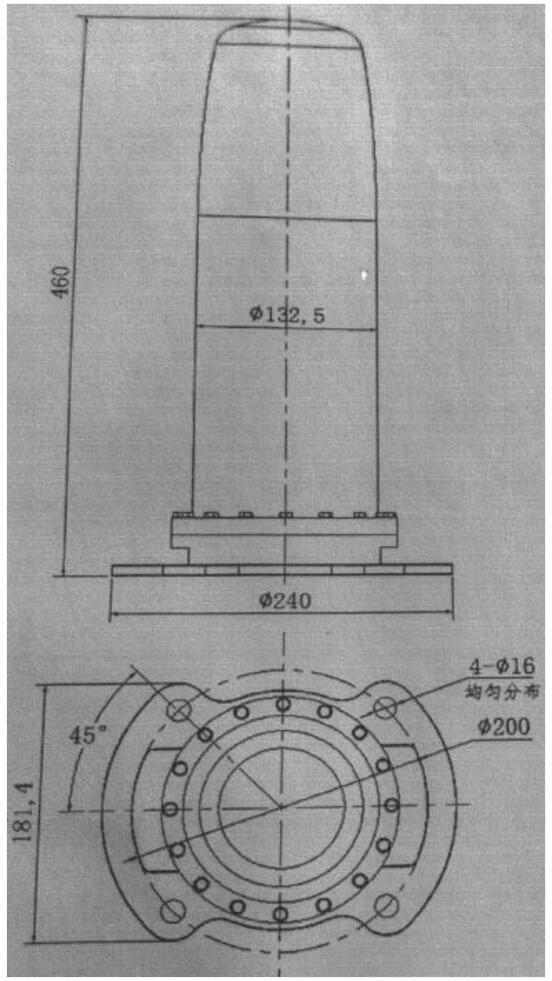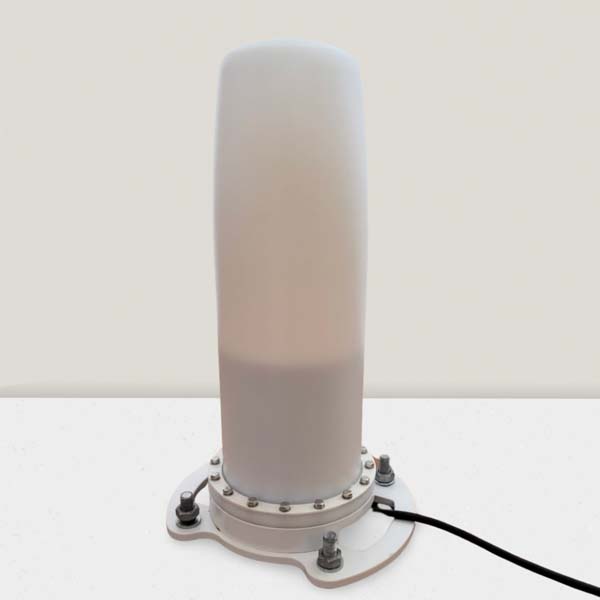
Detailed introduction
Radar beacon transponder, also known as racon beacon, is an essential device in marine navigation. A marine racon is specifically designed to enhance the safety and efficiency of maritime operations.
These beacons work by responding to radar signals. When a ship or aircraft's radar beam detects a racon beacon, it immediately sends back a distinct and conspicuous signal. This signal stands out on the radar screen, making the location of the beacon easily identifiable.
The conspicuous beacon feature is crucial as it helps mariners and pilots quickly locate important points of reference, such as buoys, lighthouses, or other navigational aids. It provides an added layer of safety, especially in areas with poor visibility or congested waters.
Racon beacons can operate on different frequency bands, with X and S bands being commonly used. The X band offers higher resolution, allowing for more detailed detection. However, it has a relatively shorter range. On the other hand, the S band provides a longer range but with slightly lower resolution.

In marine applications, the choice of frequency band depends on various factors such as the specific navigation requirements, the distance to be covered, and the environmental conditions. For example, in areas where long-range detection is essential, the S band may be preferred. Whereas in situations where more precise localization is needed, the X band could be a better option.
Radar beacon transponders play a significant role in ensuring safe and effective marine navigation. They provide valuable information to mariners and pilots, helping them make informed decisions and avoid potential hazards. With their ability to enhance radar visibility and provide distinct signals, racon beacons are indispensable tools for the maritime industry. Radar beacon transponder racon beacon marine racon radar conspicuous beacon X and S band
Overview:
A radar beacon transponder, or racon beacon, is a crucial device for marine navigation. Marine racons enhance radar detection by sending back a distinct signal when illuminated by a ship or aircraft's radar. The conspicuous beacon is easily spotted on the radar screen, providing important navigational references.
These beacons can operate on X and S bands. The X band offers higher resolution for more accurate detection in closer ranges. The S band, on the other hand, provides longer range coverage. Mariners rely on these beacons to navigate safely, especially in areas with poor visibility or congested waters. They are essential for avoiding collisions and ensuring the smooth flow of maritime traffic.
Compliance:
1. IALA Recommendations and IMO Standards.
Features:
1. Our radar beacon is responsive on both X and S bands.
2. The racon radar features high transmit power and enhanced receive sensitivity, ensuring a long service range.
3. The length of the Morse code response can be adjusted to match the display range setting by programming the answer duration based on the pulse length prior to installation.
4. Automatic determination of response length.
5. It has a wide power supply range from 9 to 24V DC.
6. The racon radar beacon is of low power consumption.
7. A lightweight radar transponder beacon.
8. Equipped with transient over-voltage and reverse polarity protection.
9. A maintenance-free racon beacon.
Specification:
|
Product Name |
Radar beacon transponder racon beacon marine racon radar conspicuous beacon X and S band |
|
Mode NO.: |
AO-RB-G4 |
|
Frequency range: |
X band(9300~9500MHz) S band(2900~3100MHz) |
|
Receptor sensitivity(adjustable):
|
X band: - 35dBm~- 50dBm S band: -30dBm~- 50dBm |
|
Antenna: |
X band: Gain: 9dB; Horizontal: 360º (±1dB); Vertical: 20º. S band: Gain: 5dB; Horizontal: 360º (±1dB); Vertical: 70º. |
|
Polarisation: |
X band: Horizontal. S band: Vertical. |
|
Input voltage: |
DC 9-24V |
|
Power consumption:
|
Standby condition: 0.6W;
Working: 3-5W
|
|
Response encoding: |
16 types Morse codes for X band and S band. |
|
Output power: |
Typical ≥ 1W (X and S bands) |
|
Speed response: |
X Bnad: 10 KHz S band: 5 KHz |
|
Frequency Precision: |
≤ ±2 MHz |
|
Response delay: |
≤ 0.05μS |
|
Communications and programming: |
RS232 or RS485 |
|
Materials: |
316 stainless steel and polyamide |
|
Work environment: |
-40℃~+80℃, Humidity 0%-100% |
|
Weight: |
3.2kg |
|
IP Grade: |
IP67 |
|
Recognition range: |
5/10nm in any direction. |
Dimension & Installation:

Applications:
Radar beacon transponder, also known as racon beacon, finds extensive applications in various marine settings. In ports and harbors, marine racons serve as crucial navigational aids. They help ships navigate safely through congested waters by providing a conspicuous signal on the ship's radar. The X and S bands of these beacons offer different advantages. The X band provides higher resolution, enabling better detection of nearby objects and structures. This is particularly useful for maneuvering within the confines of a port. The S band, on the other hand, offers a longer range, allowing ships to detect the beacon from a greater distance as they approach the port.
Offshore platforms also rely on racon beacons. In the open sea, where visibility can be poor due to fog, rain, or darkness, these beacons help ships and helicopters locate the platforms. The conspicuous beacon signal stands out on the radar screen, ensuring safe approach and departure.
For shipping lanes, racon beacons mark important points such as channel entrances, turning points, and danger areas. They assist ships in maintaining their course and avoiding collisions. The ability to respond on both X and S bands gives mariners more flexibility in choosing the most appropriate frequency depending on the operating conditions.
In search and rescue operations, racon beacons can be a lifesaver. They help rescuers quickly locate distressed vessels by providing a strong and distinct signal on the radar. The marine racon's reliability and visibility make it an essential tool in emergencies.
Radar beacon transponders play a vital role in ensuring the safety and efficiency of marine operations in a wide range of locations and scenarios.

